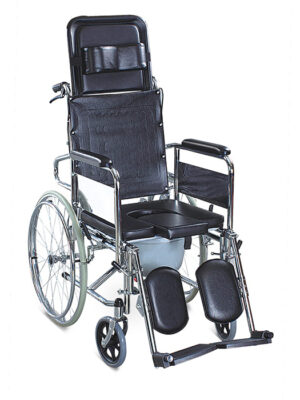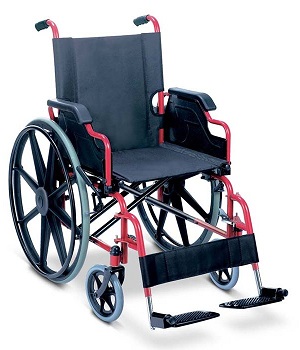Wheel Chair A self-propelled manual Wheel Chair incorporates a frame, seat, one or two footplates (footrests) and four wheels: usually two caster wheels at the front and two large wheels at the back. There will generally also be a separate seat cushion. The larger rear wheels usually have push-rims of slightly smaller diameter projecting just beyond the tyre; these allow the user to manouevre the chair by pushing on them without requiring them to grasp the tyres. Manual wheelchairs generally have brakes that bear on the tyres of the rear wheels, however these are solely a parking brake and in-motion braking is provided by the user’s palms bearing directly on the push-rims.
As this causes friction and heat build-up, particularly on long downslopes, many Wheel Chair users will choose to wear padded Wheel Chairgloves. Manual wheelchairs often have two push handles at the upper rear of the frame to allow for manual propulsion by a second person, however many active Wheel Chair users will remove these to prevent unwanted pushing from people who believe they are being helpful.
Everyday manual Wheel Chair come in two major varieties, folding or rigid. Folding chairs are generally low-end designs, whose predominant advantage is being able to fold, generally by bringing the two sides together. However this is largely an advantage for part-time users who may need to store the wheelchair more often than use it. Rigid wheelchairs, which are increasingly preferred by full-time and active users, have permanently welded joints and many fewer moving parts. This reduces the energy required to push the chair by eliminating many points where the chair would flex and absorb energy as it moves.
Welded rather than folding joints also reduce the overall weight of the chair. Rigid chairs typically feature instant-release rear wheels and backrests that fold down flat, allowing the user to dismantle the chair quickly for storage in a car. A few wheelchairs attempt to combine the features of both designs by providing a fold-to-rigid mechanism in which the joints are mechanically locked when the Wheel Chair is in use.







Reviews
There are no reviews yet.